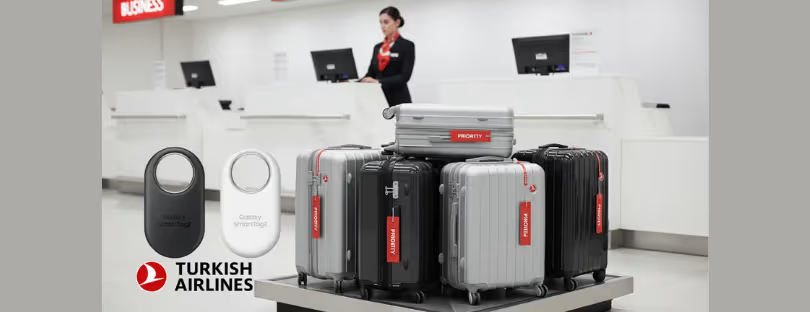
Travel Data Analytics and Insights: Leveraging big data in travel
Imagine a world where travel companies can predict your dream vacation before you even know it. Where airlines can personalize your in-flight experience based on past preferences. This is the power of travel data analytics, a game-changer that’s revolutionizing the travel industry.
In essence, travel data analytics is the art and science of collecting, analyzing, and interpreting vast amounts of travel-related information, also known as big data. This data comes from a variety of sources, acting as hidden gems waiting to be unearthed.
- A Treasure Trove of Information:
- Booking data: flight purchases, hotel reservations, activity bookings
- Social media: travel trends, sentiment analysis, reviews
- Mobile data: location tracking, app usage, travel patterns
- Customer surveys and feedback: preferences, interests, travel goals
Beyond the Ticket: Different Types of Travel Data
Travel data goes far beyond just airline tickets and hotel stays. It paints a detailed picture of traveler behavior, encompassing:
- Demographic data: age, gender, location, income
- Psychographic data: interests, preferences, travel styles
- Behavioral data: booking patterns, search history, spending habits
By harnessing this treasure trove of information, travel companies can gain a deep understanding of their customers, their desires, and their pain points.
Charting the Course: How Does Travel Data Analytics Work?
TraveI data analytics is like navigating a vast ocean. It requires meticulous planning and the right tools to transform raw data into actionable insights.
- Gathering the Crew: Data Collection Methods
The first step is gathering the data. Travel companies collect information through various channels:
* Internal data sources: booking systems, customer relationship management (CRM) platforms * External data sources: social media platforms, travel review websites, public data sets
- From Mess to Message: Data Processing and Analysis Techniques
Once collected, the data needs to be cleaned, organized, and analyzed. This involves advanced techniques like:
* Data warehousing: storing and managing large datasets * Data mining: uncovering hidden patterns and trends * Machine learning: creating algorithms to predict travel behavior
Setting Sail for Success: Benefits of Travel Data Analytics
By leveraging traveI data analytics, travel companies can embark on a journey of success:
- Personalized Voyages: Tailoring Experiences for Every Traveler
Imagine receiving travel recommendations that perfectly match your interests, from adrenaline-pumping adventures to relaxing beach getaways. TraveI data analytics allows companies to personalize travel packages, hotel recommendations, and even in-flight entertainment based on individual preferences. This creates a more satisfying and memorable travel experience for every customer.
- A Captain’s Compass: Making Informed Business Decisions
Travel data analytics acts as a compass, guiding companies toward data-driven decisions. By analyzing booking trends and forecasting travel demand, companies can optimize pricing strategies, adjust flight schedules, and invest in high-demand destinations. This leads to increased revenue and a competitive edge in the market.
- Smoother Seas: Optimizing Operations and Pricing Strategies
Travel data analytics helps identify areas for improvement within a company’s operations. By analyzing flight delays, cancellations, and baggage handling data, airlines can streamline processes and enhance efficiency. Additionally, companies can use data to create dynamic pricing models that adjust prices based on real-time demand, maximizing revenue while remaining competitive. Additionally, companies can use data to create dynamic pricing models that adjust prices based on real-time demand, maximizing revenue while remaining competitive.
- Predicting the Tides: Forecasting Travel Trends
Travel data analytics isn’t just about understanding the present; it’s about predicting the future. By analyzing historical data and current trends, companies can forecast travel patterns and make informed decisions:
* Identifying peak travel seasons and destinations to optimize staffing and resource allocation * Predicting travel disruptions due to weather events or political unrest * Anticipating emerging travel trends and preferences to develop targeted marketing campaigns
This proactive approach allows travel companies to stay ahead of the curve and cater to the ever-evolving needs of travelers.
Navigating the Challenges: Obstacles in Travel Data Analytics
While travel data analytics offers a wealth of benefits, it’s not without its challenges:
- Data Security Concerns: Keeping Your Passengers Safe
Travel data often includes personal information like names, passport details, and credit card numbers. Ensuring the security of this data is paramount. Companies need to implement robust security measures to prevent data breaches and protect traveler privacy.
- Untangling the Web: Dealing with Complex Data Sets
Travel data sets can be massive and complex, requiring advanced data management and analytics skills to process effectively. Companies may need to invest in specialized software and personnel to handle the complexities of big data.
- Privacy Considerations: Respecting Traveler Information
Travelers are increasingly concerned about how their data is collected, used, and shared. Companies need to be transparent about their data practices and obtain explicit consent from travelers before using their information. Building trust and respecting traveler privacy is crucial for long-term success in the data-driven travel industry.
The Future of Travel Data Analytics
The future of travel data analytics is bright, and filled with exciting possibilities:
- Emerging Technologies: Embracing AI and Machine Learning
Artificial intelligence (AI) and machine learning (ML) are revolutionizing traveI data analytics. These technologies can automate tasks, identify complex patterns, and generate even more insightful predictions about traveler behavior.
For instance, AI-powered chatbots can personalize customer service experiences by recommending destinations and activities based on past travel preferences.
- A Collaborative Journey: Partnerships and Data Sharing
Collaboration is key in the travel industry. By partnering with other travel companies, airlines, and tourism boards, businesses can gain access to a wider range of data, leading to more comprehensive insights. Additionally, data sharing can be mutually beneficial, allowing different players in the travel ecosystem to optimize their offerings and create seamless travel experiences.
Conclusion
TraveI data analytics is no longer a luxury; it’s a necessity for travel companies that want to thrive in today’s competitive market. By harnessing the power of big data, companies can personalize the travel experience, make smarter business decisions, and navigate the ever-changing travel landscape. As data analytics continues to evolve, the future of travel promises to be more personalized, efficient, and exciting than ever before.











